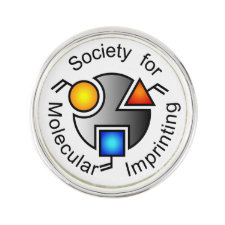
Authors: Pan JM, Zou XH, Li CX, Liu Y, Yan YS, Han JA
Article Title: Synthesis and applications of Ce(III)-imprinted polymer based on attapulgite as the sacrificial support material for selective separation of cerium(III) ions.
Publication date: 2010
Journal: Microchimica Acta
Volume: 171
Issue: (1)
Page numbers: 151-160.
DOI: 10.1007/s00604-010-0416-z
Abstract: A surface-imprinting technique combined with a sacrificial support process was established to synthesize a novel Ce(III)-imprinted polymer (CIP) in which attapulgite acts as the sacrificial support material. The CIP was compared with attapulgite, non-imprinted polymer (NIP), and with a Ce(III)-imprinted polymer where attapulgite acts as the support material (AIP). Fourier transmission infrared spectrometry, scanning electron microscopy, transmission electron microscopy, simultaneous thermogravimetry, nitrogen sorption, and laser particle sizing were employed, and an imprinting mechanism is suggested. Batch experiments were performed to evaluate adsorption kinetics, selective recognition, adsorption isotherms, desorption and regeneration performances of the CIP. The CIP offers fast adsorption kinetics for Ce3+, and the maximum adsorption capacity is 130mg-1, which is larger than that of AIP and attapulgite. The absorption abilities of Ce3+ from aqueous solutions followed the order CIP > AIP > attapulgite > NIP. CIP could be reused four times with only about 16% and 18% loss of adsorption capacity in pure Ce3+ solution and potentially interfering ion solution, respectively. The method was applied to the separation and determination of trace Ce3+ in river sediments. The relative standard deviation of the method is 2.6% (n = 6.0), and the detection limit (3σ) is 57 ng L-1
Template and target information: cerium ions, Ce(III)
Author keywords: Attapulgite, Sacrificial support material, Surface ion-imprinted, adsorption, Cerium(III) ions



Join the Society for Molecular Imprinting

New items RSS feed
Sign-up for e-mail updates:
Choose between receiving an occasional newsletter or more frequent e-mail alerts.
Click here to go to the sign-up page.
Is your name elemental or peptidic? Enter your name and find out by clicking either of the buttons below!
Other products you may like:
 MIPdatabase
MIPdatabase









